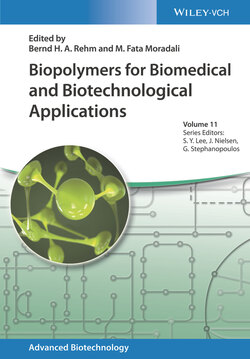Читать книгу Biopolymers for Biomedical and Biotechnological Applications - Группа авторов - Страница 38
2.6.2.1 Antiviral Activity
ОглавлениеGenerally, polysaccharides rich in sulfate groups have antiviral capacity. These molecules seemed to be able to block the binding of the virions to the host cell surfaces [77,183,191] and inhibit reverse transcriptase in human immunodeficiency virus (HIV), interfering with the replication and the production of new viral particles [183,191,192]. For example, sulfur‐containing EPS from Arthrospira presented antiviral activity against numerous viruses, including human cytomegalovirus (HCMV), antihuman immunodeficiency virus (anti‐HIV), herpes simplex virus type 1 (HSV‐1), human herpes virus type 6 (HHV‐6), measles virus, mumps virus, influenza A virus, ectromelia virus (ECTV), and vaccinia virus (VACV) [42]. P. cruentum secreted an EPS that had a higher antiviral activity against vesicular stomatitis virus than the chemical compounds ribavirin, brivudine, cidofovir, and ganciclovir [45]. Naviculan, a sulfated polysaccharide from diatom Navicula directa, inhibited enveloped viruses HSV‐1, HSV‐2, and influenza A. This polysaccharide inhibited host cell binding and virus penetration and had an inhibitory effect on cell–cell fusion between CD4‐expressing and HIV virus gp160‐expressing cells that were used as a model of HIV infection [77]. The antiviral activity of the polysaccharides produced by red microalgae was related to their anticancer properties, as these sulfated polysaccharides were able to inhibit murine leukemia retrovirus and cell transformation by murine sarcoma virus by interfering with early steps of replication, virus absorption into the host cells, and after provirus integration into the host genome [193]. Moreover, the sEPS from Gyrodinium impudicum inhibited or slowed the effect of encephalomyocarditis virus in infected HeLa cells, without any cytotoxic effects to the host cells [52]. The antiviral efficiency is also related to the molecule size, content in sulfate, monosaccharide composition, and linkage diversity [191].
